Contact: Gerald Roche, 087 9709828
Open dates in 2024: May 1-31, June 1-30, Aug 17-25, 10am-5pm
Fee: adult/OAP €8, student/child free

Woodville House is a five bay, two storey over basement house dating from about 1800. The house, situated on a working farm, belongs to the Roche Family who have lived here since 1876. We were shown around by current owner Gerald Roche.
You can book to stay in Woodville on the Airbnb website. [1]

The avenue to the house winds through parkland planted with trees including Sequoia, cedar, pines, cypress and a Wollemi pine, the website tells us. Sheep graze the pasture land.
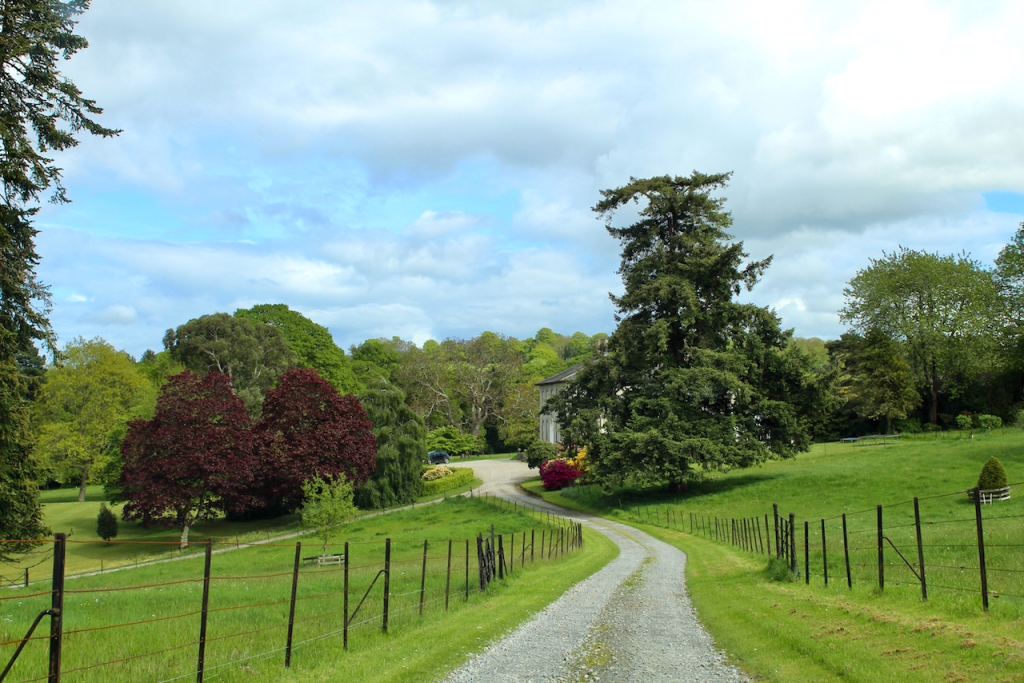
It is thought that the house was built by the Tottenhams: the first mention of it is as the home of Edward Tottenham. Edward William Tottenham (1779-1860) was son of Charles (1743-1823), an MP from New Ross in County Wexford. Edward William’s grandfather, another Charles (1716-1795) married Anne Loftus, daughter of Nicholas Loftus (d. 1763) 1st Viscount of Ely. Charles’s father, another Charles (“Tottenham in his boots”), married Mary Grogan from Johnstown Castle in County Wexford, so Edward William Tottenham was from well-connected stock.

Edward William Tottenham married Henrietta Alcock (d. 1861), whose grandfather William Alcock (d. 1779) lived at Wilton Castle in County Wexford (another section 482 property, see my entry https://irishhistorichouses.com/2022/02/04/wilton-castle-bree-enniscorthy-co-wexford-and-a-trip-to-johnstown-castle/).
The website tells us that the house was subsequently lived in by a Reverend Minchen. Patrick James Roche, great grandfather of the present owner, purchased the house in 1876, just sixteen years after the death of Edward William Tottenham. The National Inventory mentions Patrick James Roche (1818-1905): ‘Magistrate [and] Maltster [and] Corn Merchant late of Woodville New Ross County Wexford.’ P.J. Roche shipped his grain to Scotland to be made into whiskey and created a fine malting establishment in New Ross, County Wexford. Current owner of Woodville, Gerald, told us that at one stage 70% of Scottish whisky was made with Irish malt. The Roches also supplied Guinness brewery with malt.
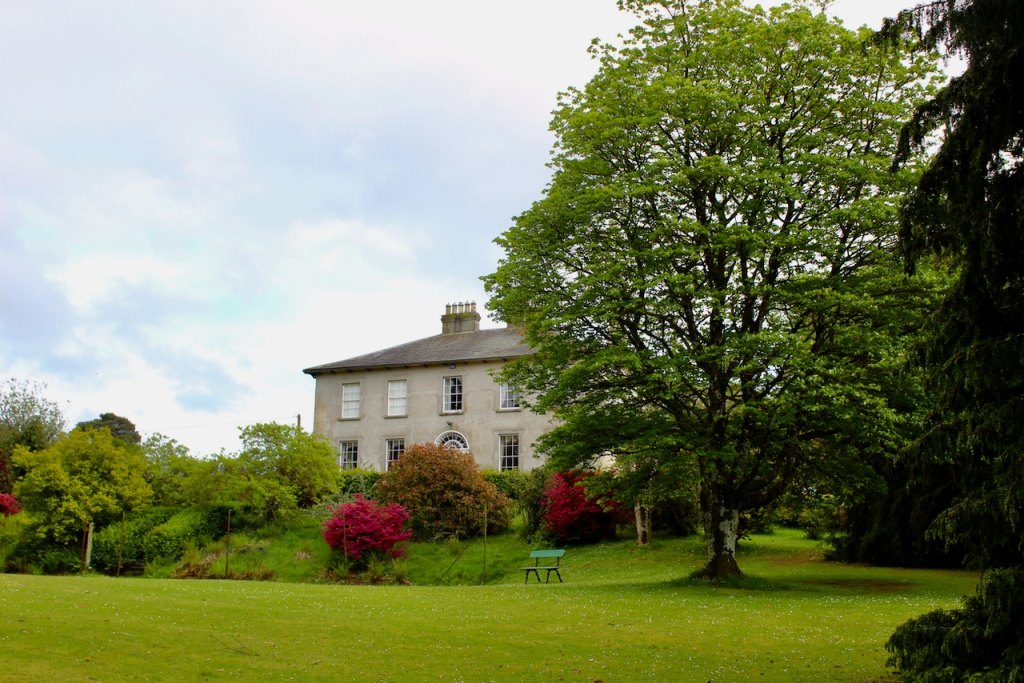
Woodville passed to P.J’s son, another Patrick James (d. 1954). He married Gwendoline née Gallwey from Tramore. The property then passed to Gerald’s father Peter and Peter’s wife Irene née Mathews who went by the unusual nickname of Mocken. Her family were from Mount Hanover in County Meath.
The Enniscorthy Castle website tells us that Patrick J. Roche negotiated with the Earl of Portsmouth for his son Henry J. Roche to live in the castle in Enniscorthy with his wife Josephine Shriver, from 1903.
The Earl of Portsmouth at that time was Newton Wallop (1856-1917), 6th Earl of Portsmouth. He was Deputy Lieutenant of County Wexford.
Josephine’s family was American and married into the famous Kennedy family. Josephine and Henry’s daughter, also named Josephine (“Dodo”), was the last to live in the Castle and it was sold in 1953. Gerald told us that his great grandfather restored the castle and it was given to the nation because of the high death duties on the property.
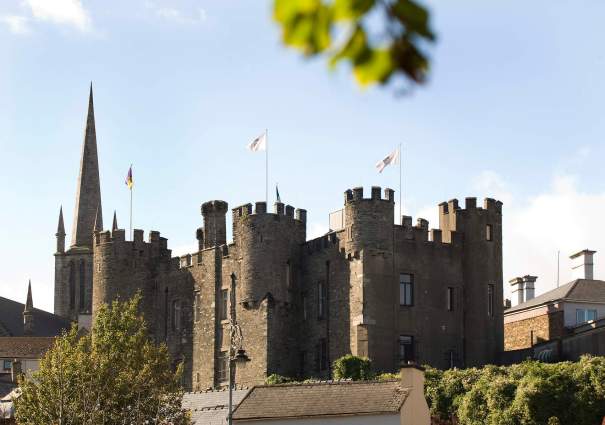

The front door is described in the National Inventory: “Round-headed central door opening approached by flight of six cut-granite steps, doorcase with engaged columns on cut-granite padstones supporting “Cyma Recta”- or “Cyma Reversa”-detailed cornice [this refers to the shape of the moulding] on fluted frieze on entablature, and moulded rendered surround framing timber panelled double doors having fanlight.”

The side and back of the house have slate hung surface finish widely regarded as an increasingly endangered hallmark of the architectural heritage of County Wexford, according to the National Inventory. The slate reminded me of Drishane House in County Cork. Gerald told us that the slate is from Bangor in Wales and was used as ballast in ships, and that the slate finish on houses is common in Kinsale in County Cork also, from where grain was also shipped. The slate is better waterproofing than lime plaster.

A 2006 addition to the house cleverly complements the older building: in the photograph above, the wing on the right is the 2006 enlargement. It is beautifully finished to merge with the rest of the house. The left wing was added in 1880 and contains the billiard room.
Woodville house has two gate lodges, one a gothic lodge opposite the river Barrow and the other a 19th century Italianate gate lodge with gates at the southern end of the property. This entrance way and avenue were built after the construction of the now disused railway.
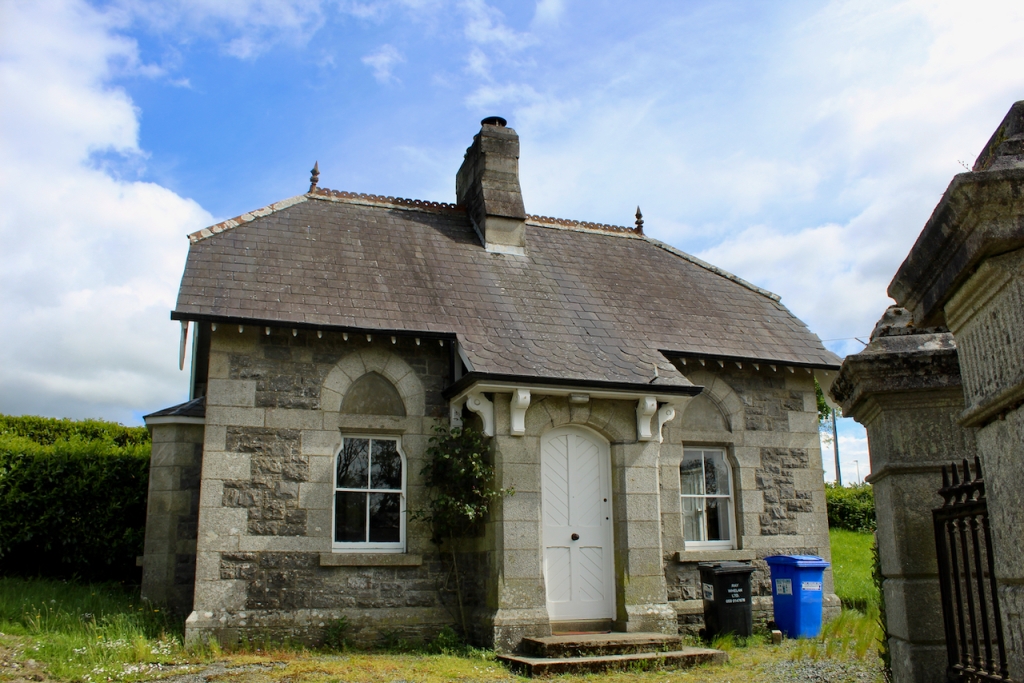
Visitors to the house can view the reception rooms, the former billiard room with faithfully copied and printed original wallpaper and Victorian conservatory by the Messenger Company, Thomas Messenger and Sons (fl. 1797-1920) of Birmingham and London. The walled garden was never let go and is beautifully maintained by its current owners. It covers three quarters of an acre.

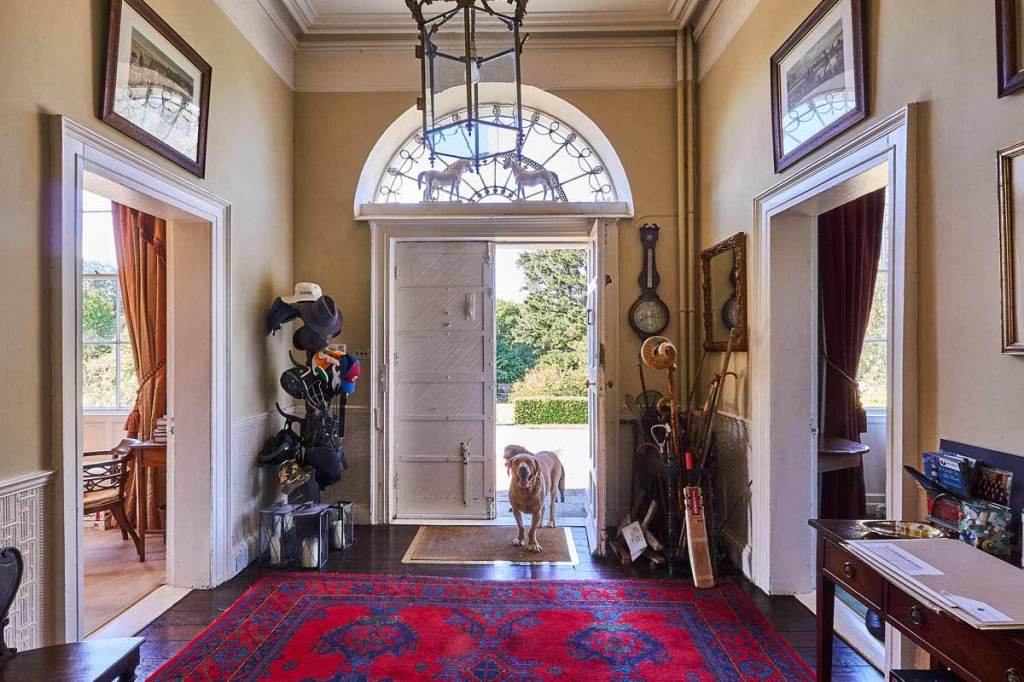


The billiard room has a lovely old gas carbide six shade light fixture converted to electricity. The wallpaper was created by David Skinner.
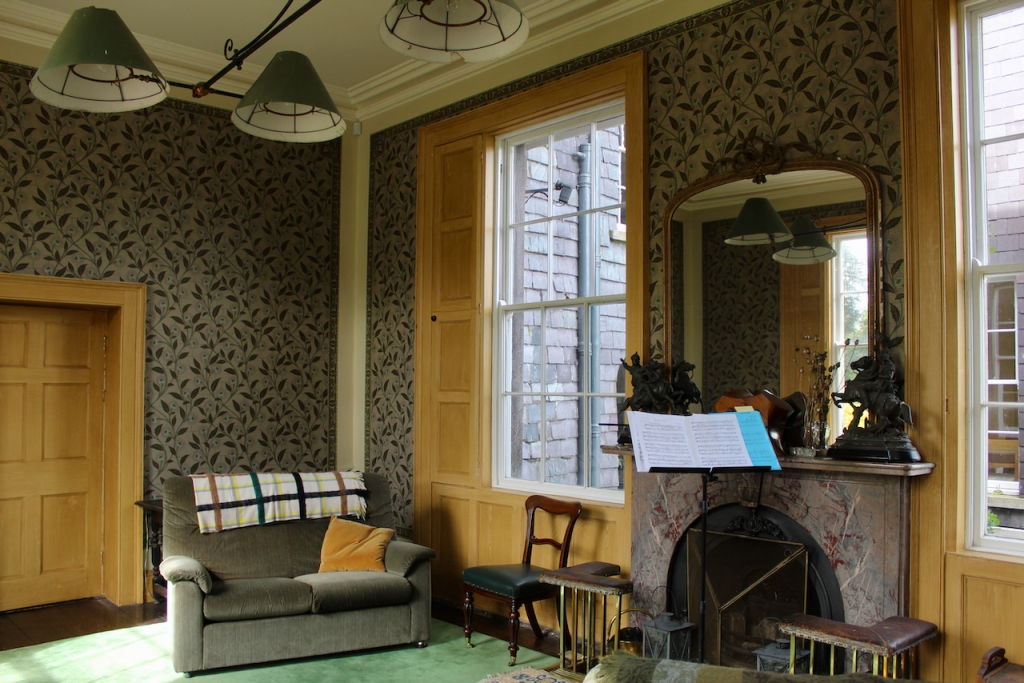
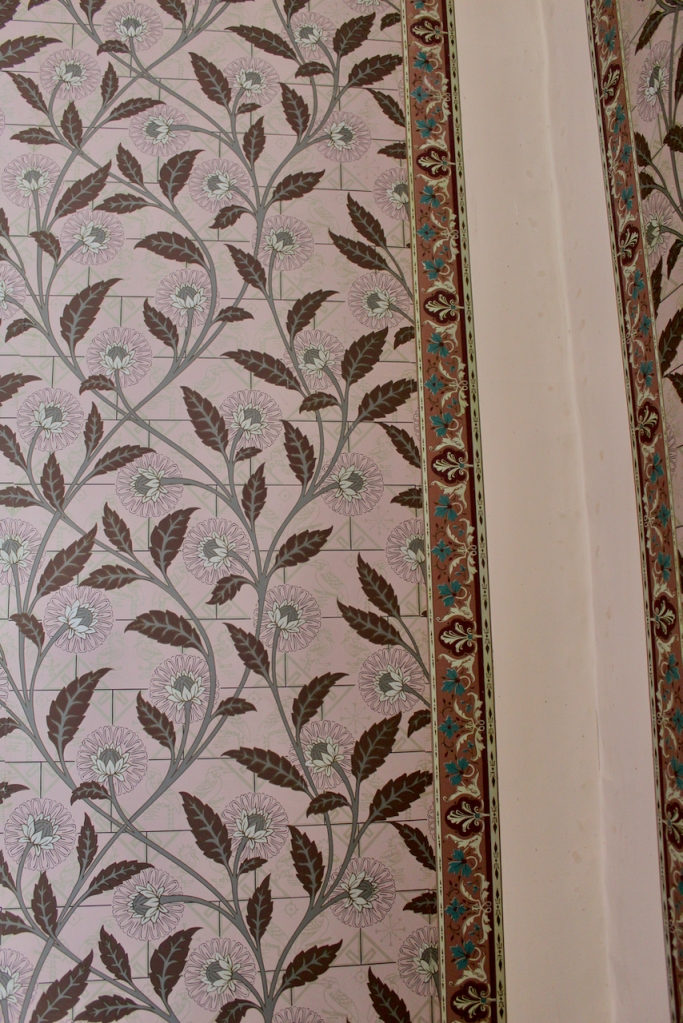
The central heating in the house was installed by the owner’s grandfather as a wedding present to his wife!
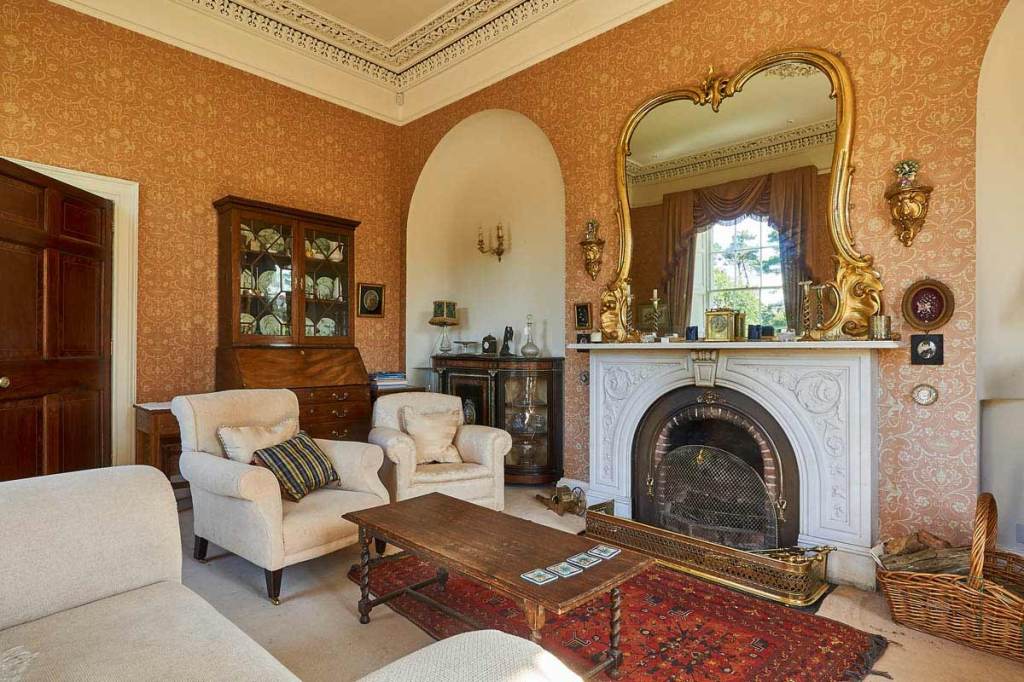

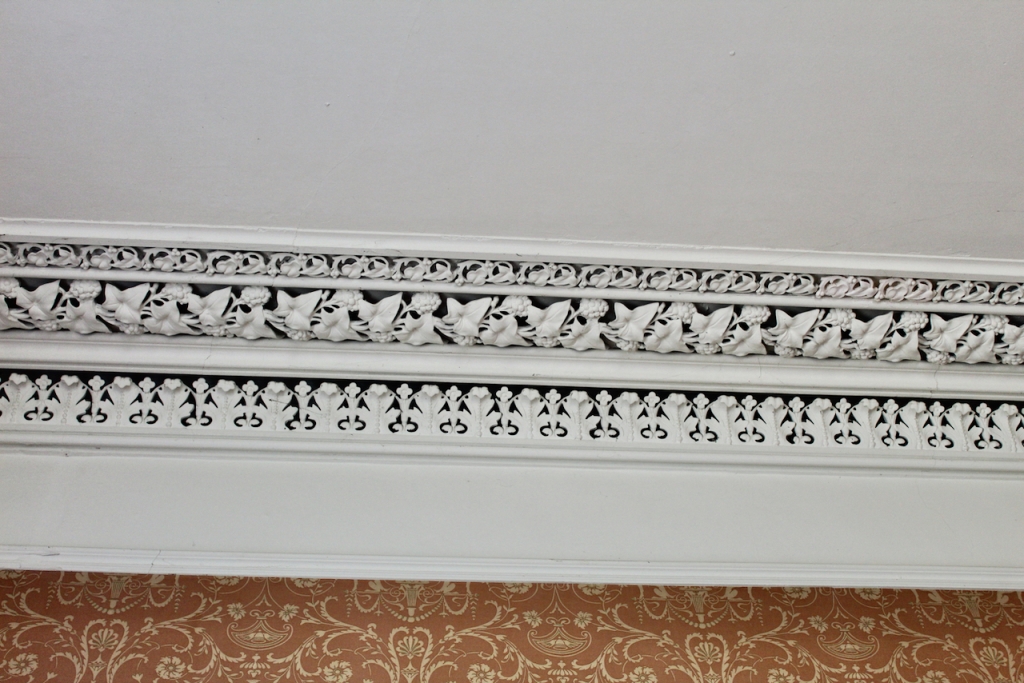

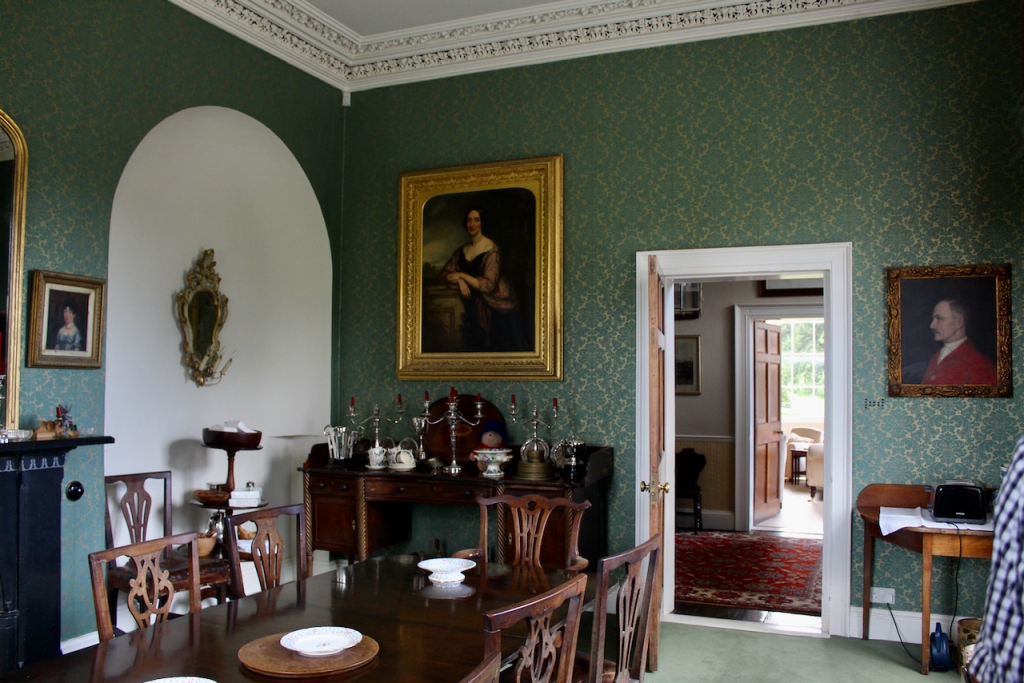
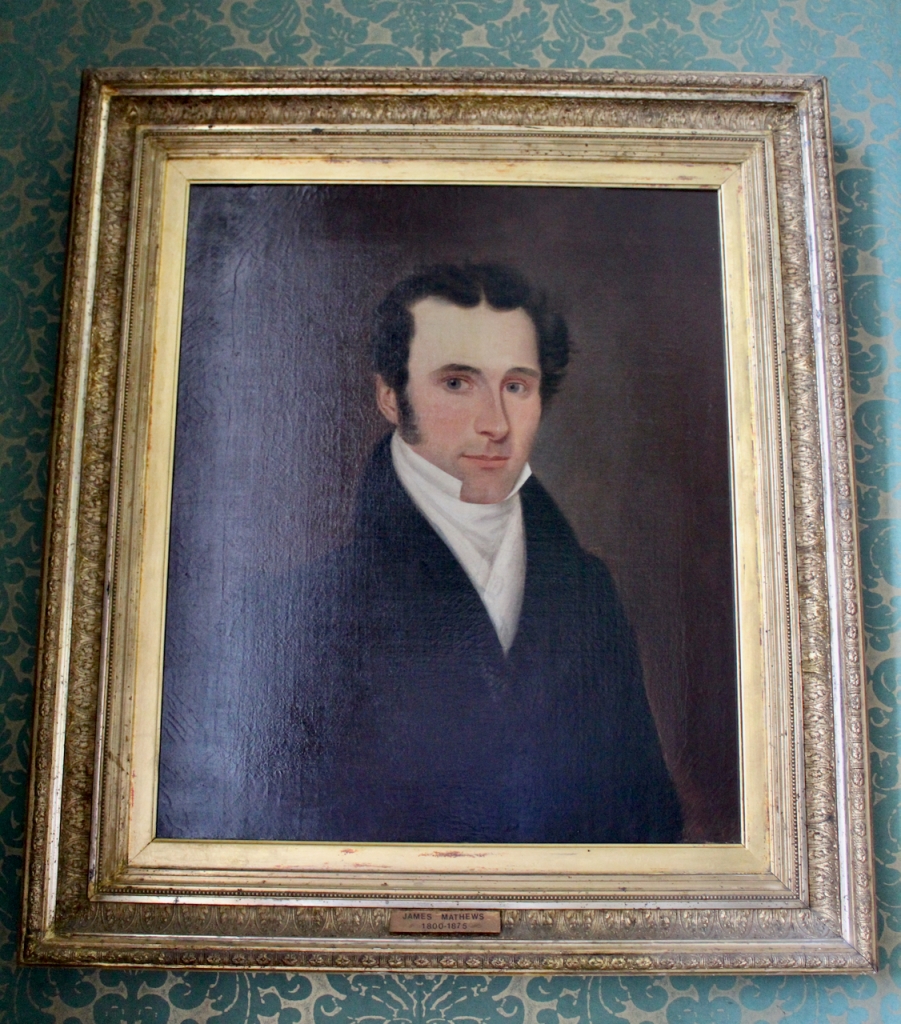
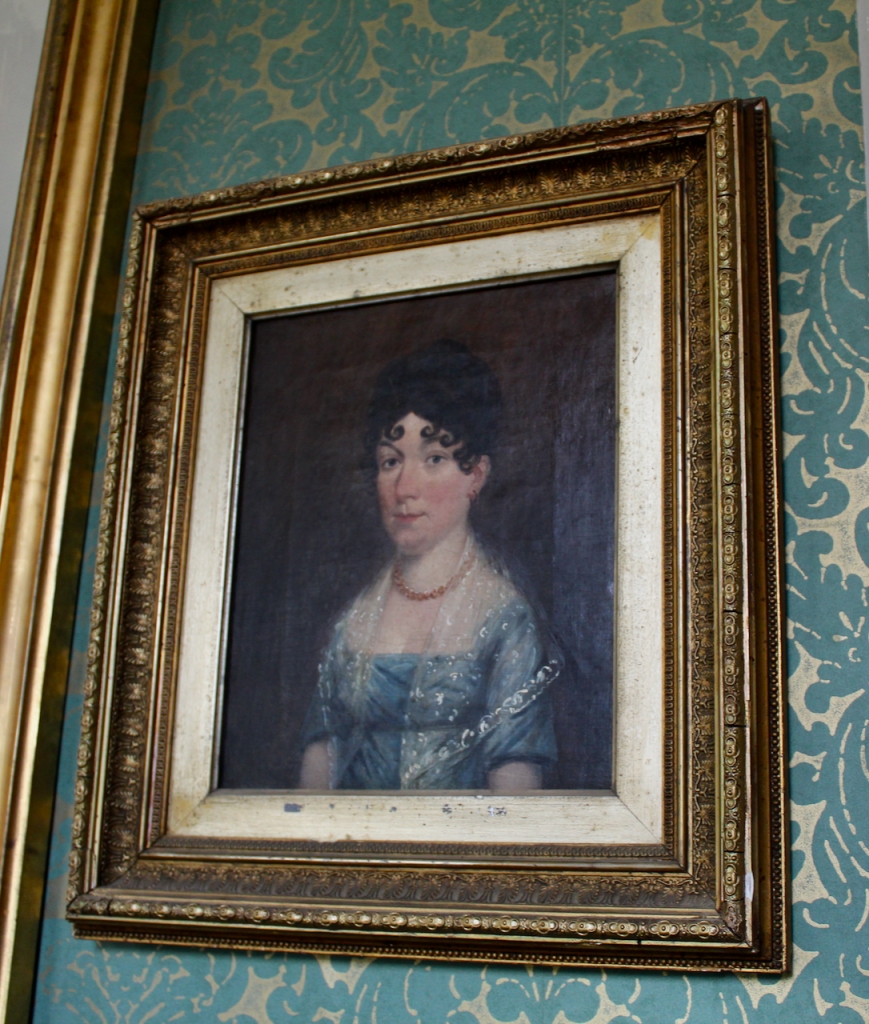
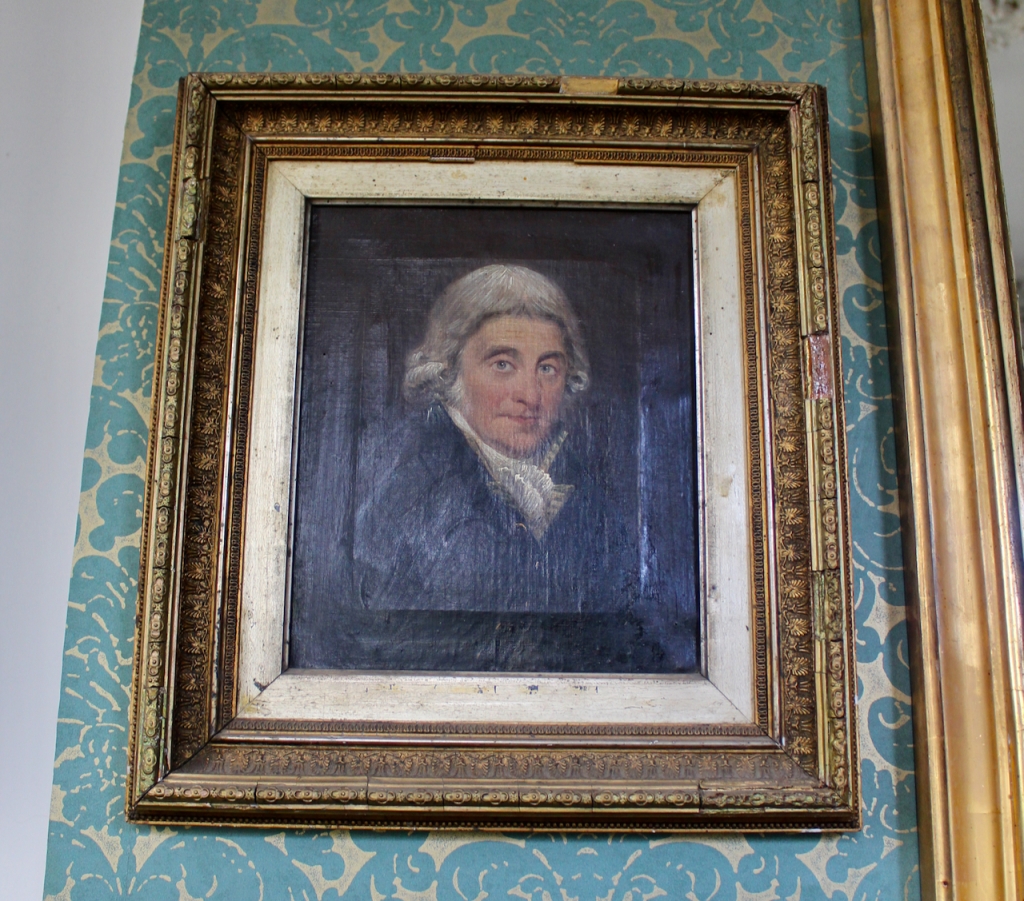
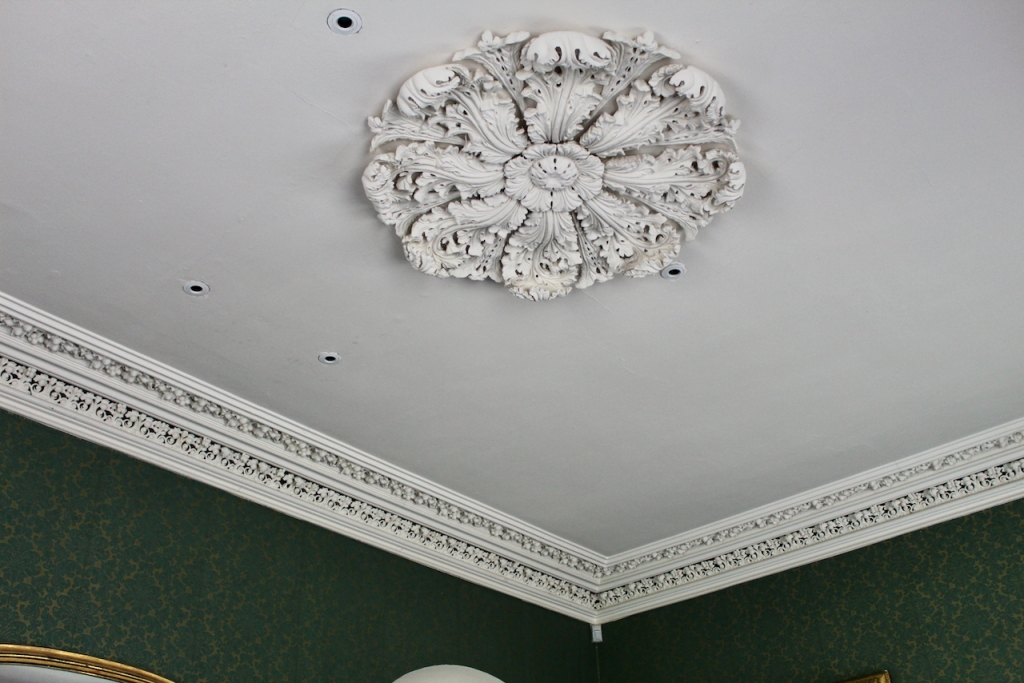
We were able to enter the glass house from inside.
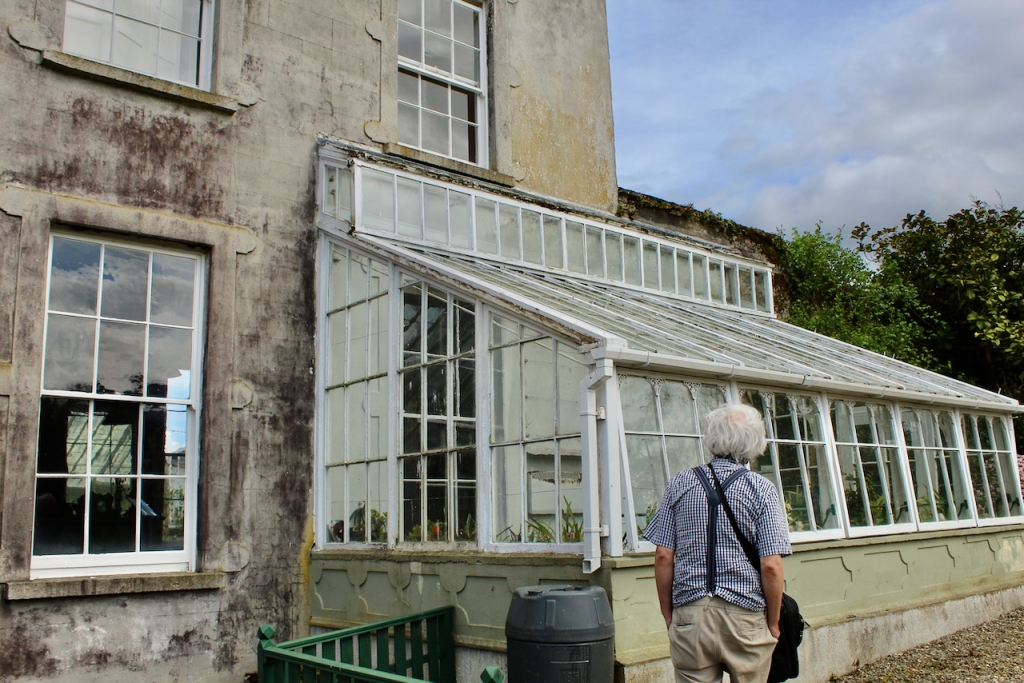



One of the rooms has beautiful paint work on the wall by Michael Dillon, which pictures several favourite occupations of the family, including music, fishing and gardening. See http://www.dillonmurals.com/ about his mural work.

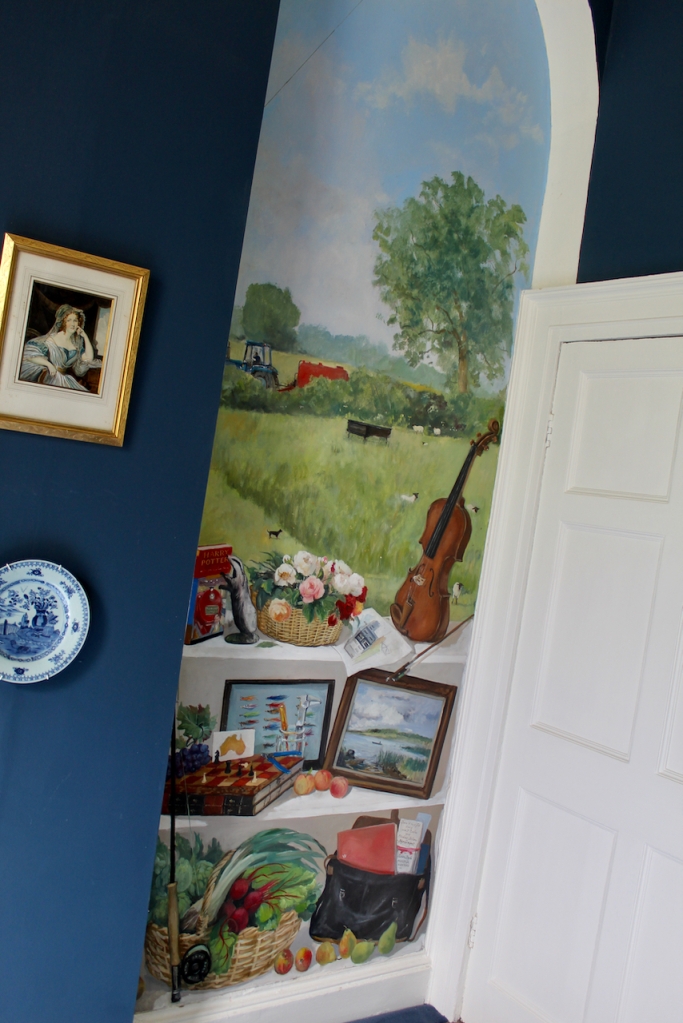
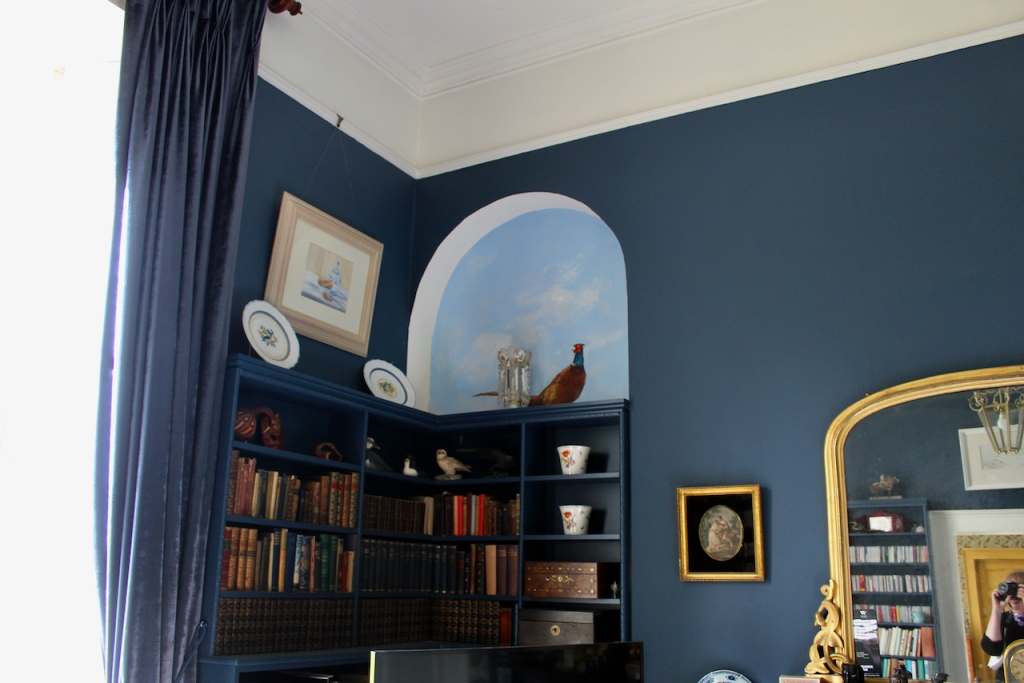

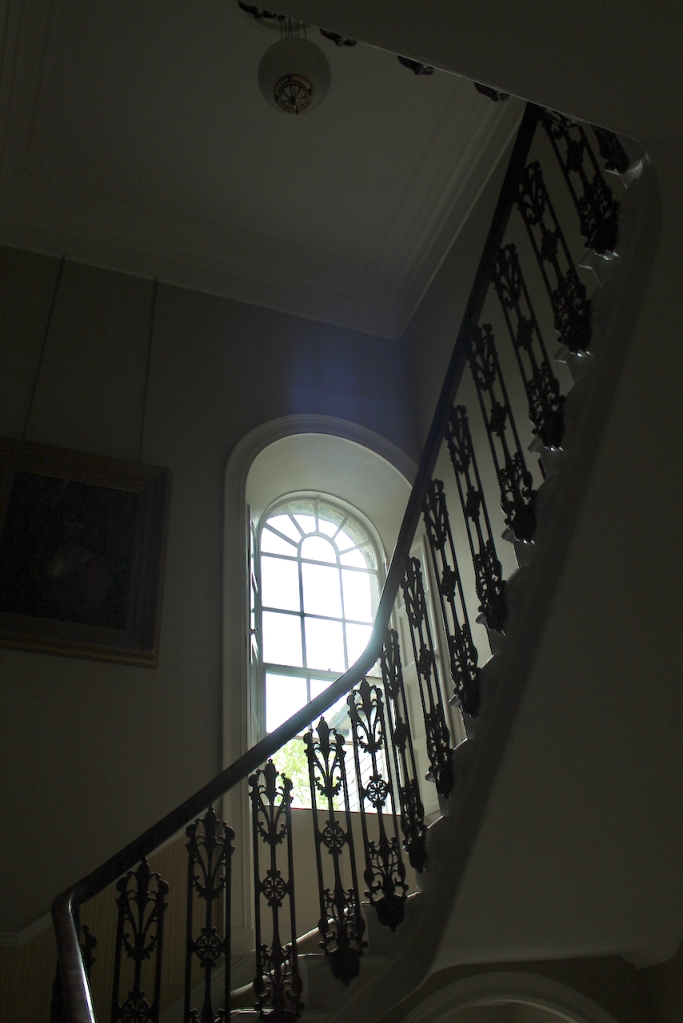


The website tells us that a laurel shrubbery to the front of the house is planted with colourful flowering cherry, Paulownia, Crinodendron, and Catalpa, and leads down to the double tennis courts which in turn leads to the water garden.

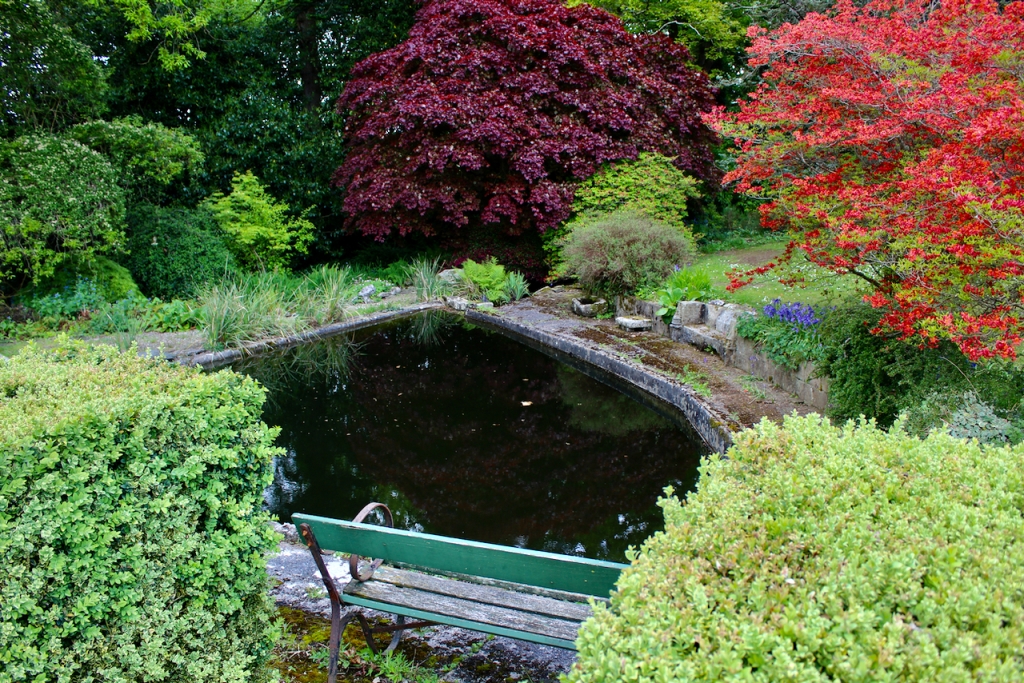
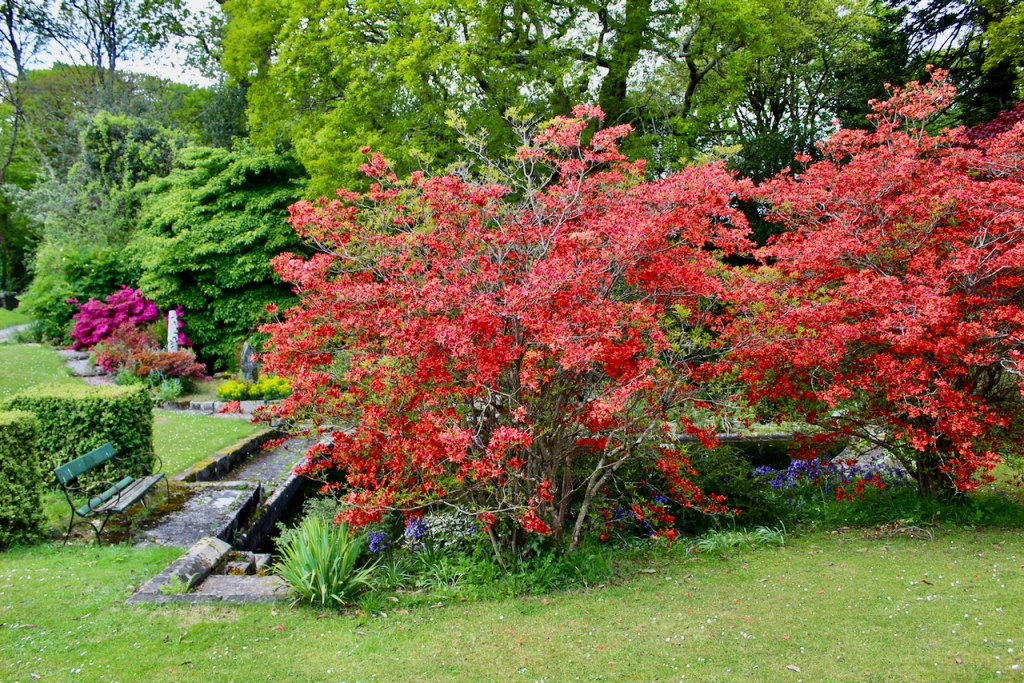
The water garden was created by Gerald’s parents Peter and Irene. They started it in 1963 and planted under the embankment of the old New Ross to Macmine Junction Railway. The water garden, the website tells us, is a tranquil haven of shade and water-loving plants: ferns, hostas, Arisarum proboscideum (the fetching mouse plant), Clematis, Astilbe and trilliums, as well as Cornus controversa and others. A series of dropping pools are shaded by majestic oaks and a Metasequoia glyptostroboides (the dawn redwood).
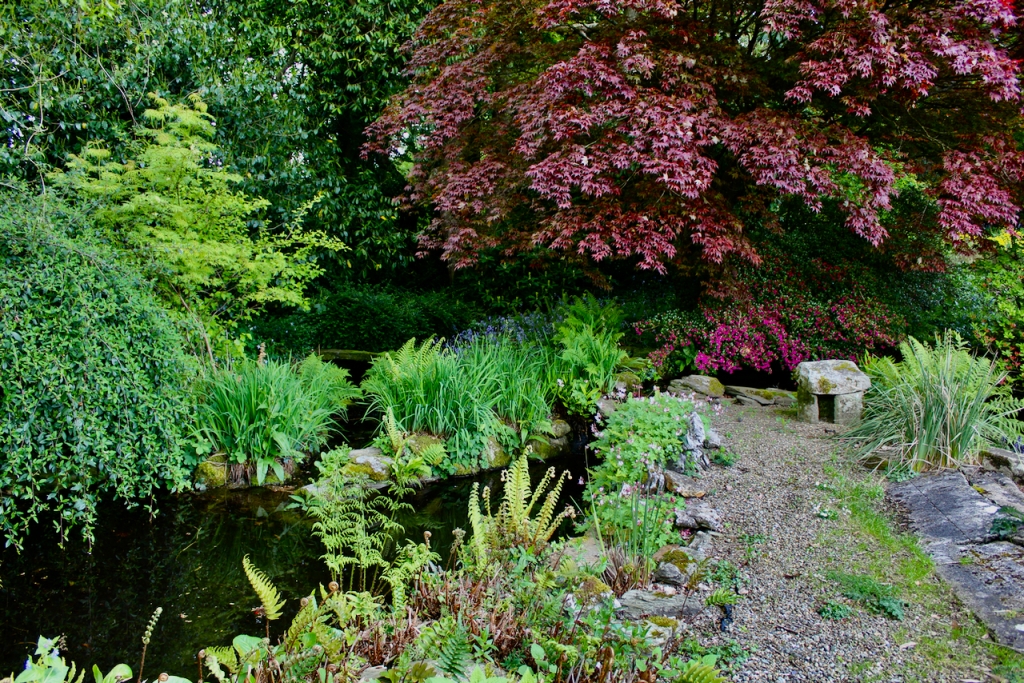
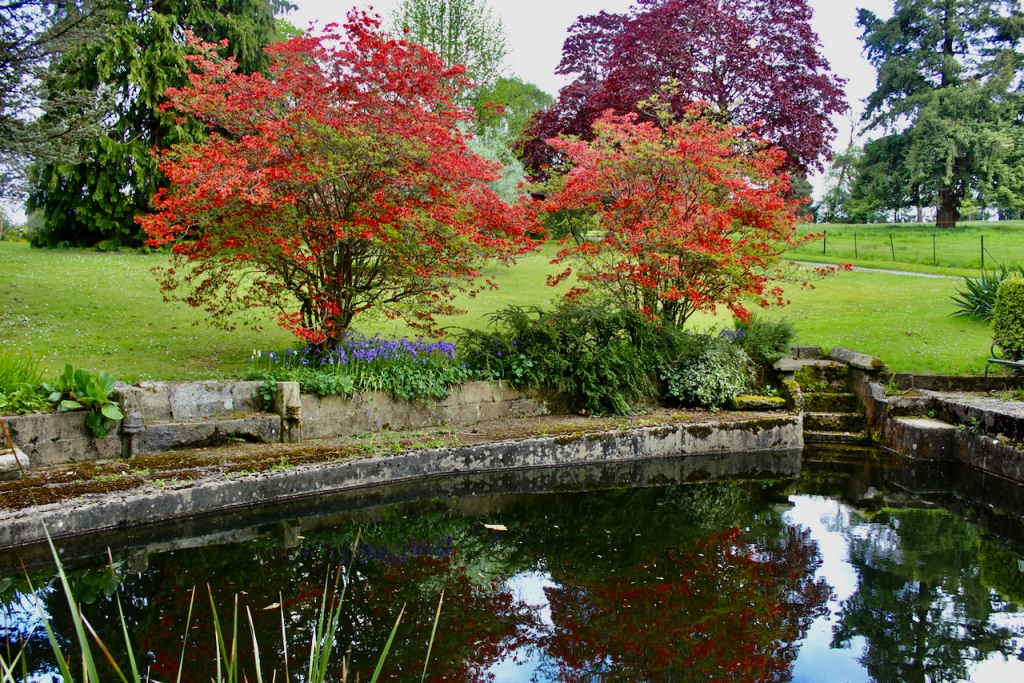
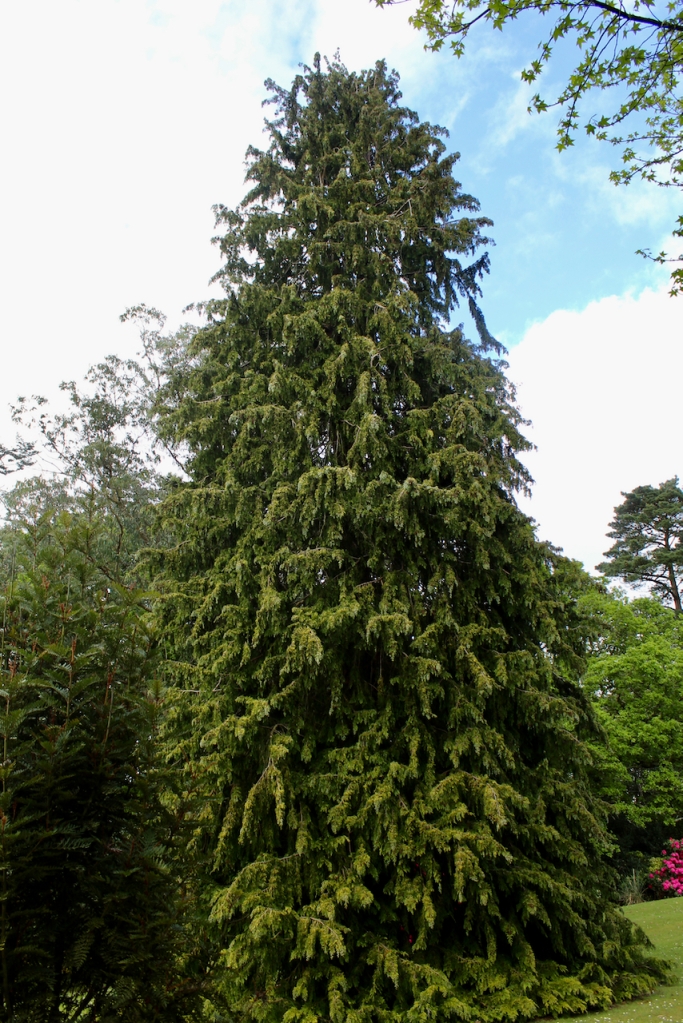
The Victorian walled garden at the rear of the house is 0.5 hectares in size with conservatories, vegetable garden, fruit trees, herbaceous borders and lawn. The original box hedging encloses different plantings – although Gerald pointed out how he has been troubled by box blight. The website tells us that the first plant to feature in spring is a Magnolia soulangeana followed by a spring border of snowdrops, crocus & narcissi.


The website describes the plants in the walled garden:
“In May the iris border comes into full bloom, a nearby bed is devoted to blue flowering plants including Chatham Island forget-me-not (Myositidium hortensia). Later the roses present a striking and colourful display contrasting with the box hedging while the reds, yellows and oranges of later summer put in an appearance. Rosa banksiae ‘Lutea’ flowers in the contemplative garden, a sunny corner and vantage point.“

The garden also provides fresh fruit and vegetables for the household. The website continues:
“The greenhouses designed by Messenger and built by P J Roche in the 1880’s house grapevines, peaches and nectarines as well as exotic and tender flowers plumbago, red and white nerines, vines and an old asparagus fern. A large bed of Crambe maritima (seakale) beloved of the Victorians is maintained as are beds of globe artichoke and asparagus.
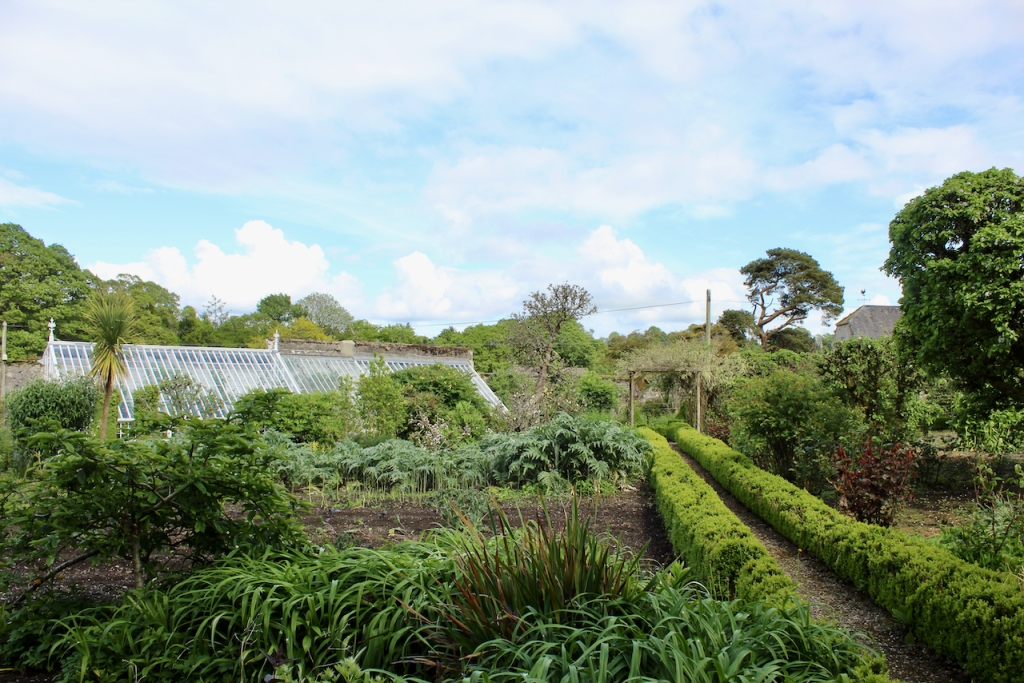
“The garden was extensively planted with several varieties of apple, pear and cherry, which carefully pruned and espaliered on frames and against the walls of this sunny garden, provide visual structure and a rich harvest.
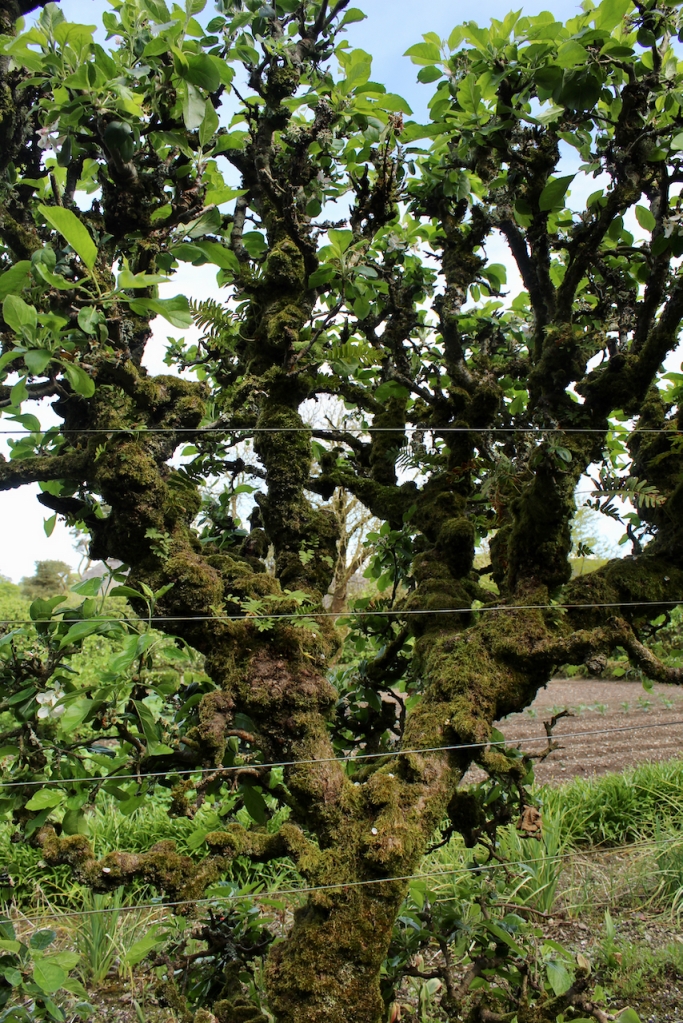
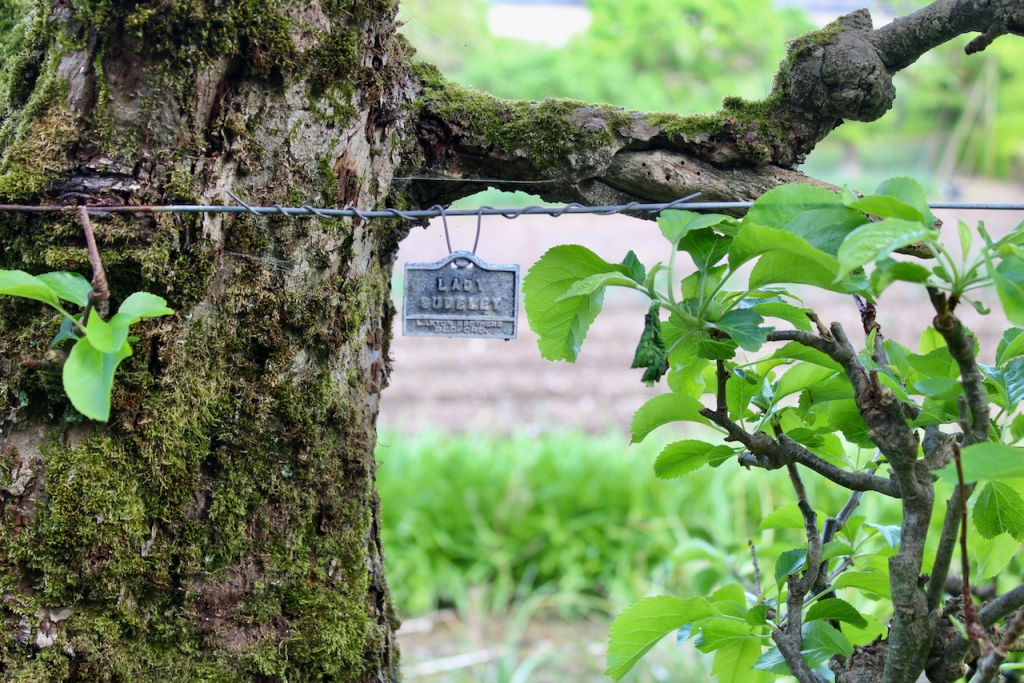
“The dairy walk, so called because in the past it was the route taken from farmyard to the dairy in the basement of the house, features a blaze of Embothrium coccineum flowering vigorously in May following on witch hazel (Hamamalis mollis), rhododendrons, camellias and azaelias producing spectactular and colourful effects in early summer.“




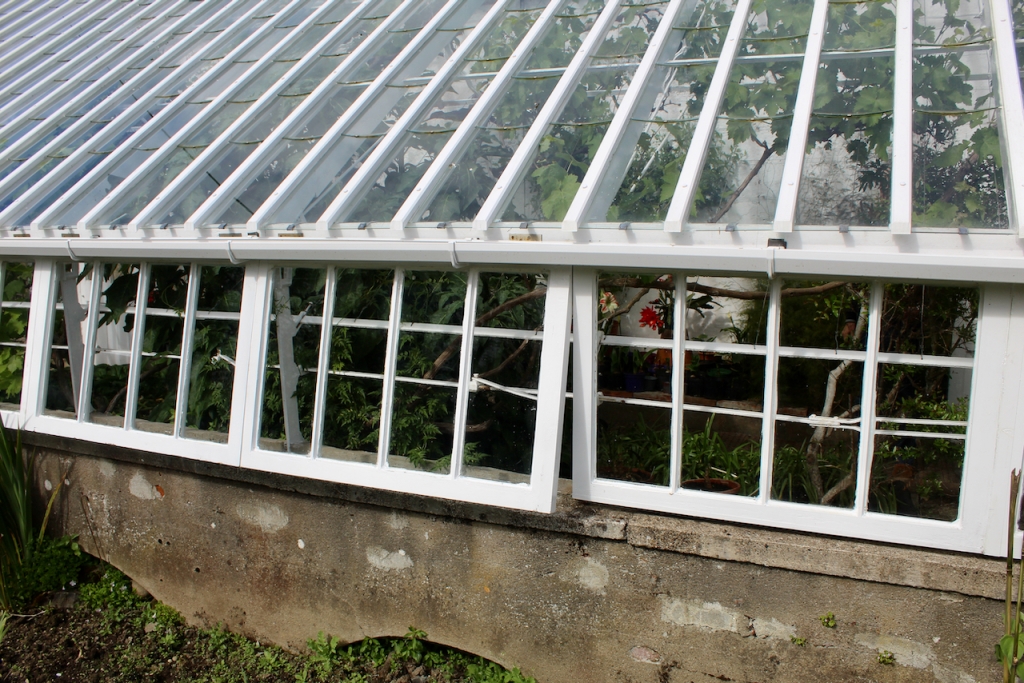

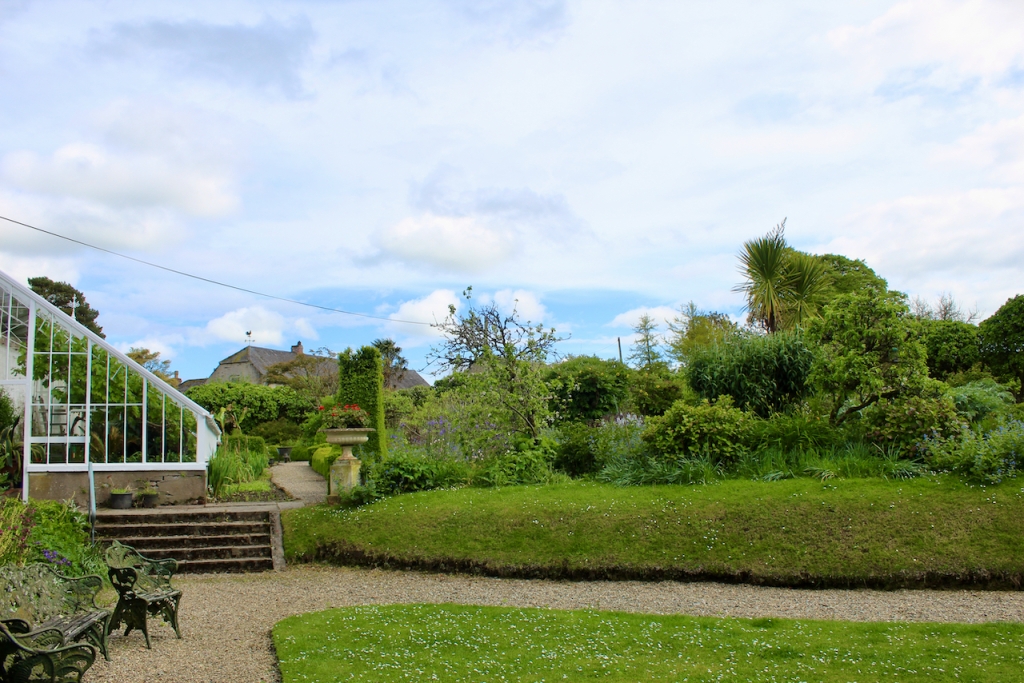
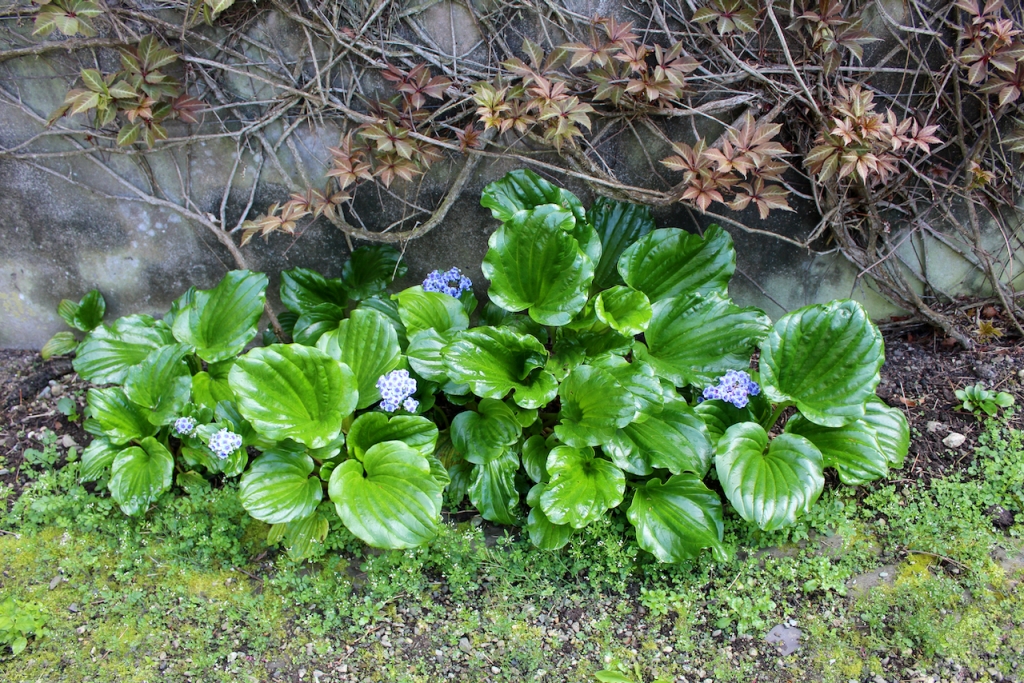
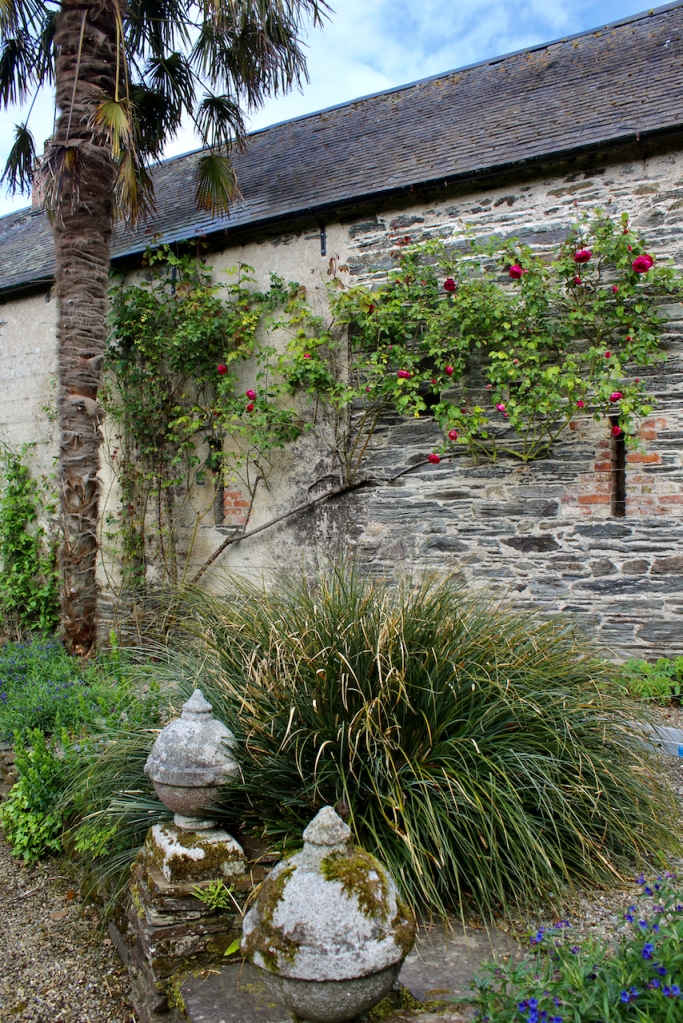
[1] https://www.airbnb.ie/rooms/12343803?source_impression_id=p3_1607423861_RBJh6KP3l4xhR93A